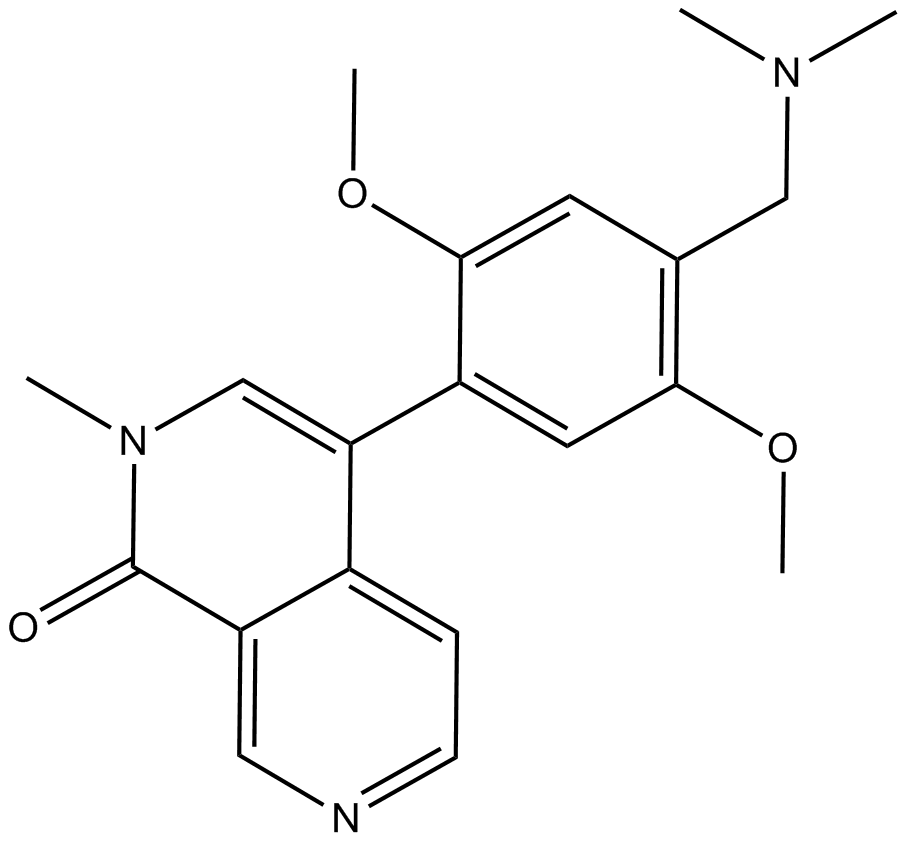BI-9564 |
| Catalog No.GC16817 |
BRD9/7 specific inhibitor
Products are for research use only. Not for human use. We do not sell to patients.

Cas No.: 1883429-22-8
Sample solution is provided at 25 µL, 10mM.
IC50: 75 nM and 3.4 μM for BRD9 and BRD7 bromodomains, respectively
BI-9564 is a BRD9/7 specific inhibitor.
BRD7 and BRD9 are two important members of the bromodomain family protein. Both BRD7 and BRD9 have been implicated in chromatin remodeling.
In vitro: BI-9564 was identified as a BRD9/7 specific inhibitor via fragment-based screening and structure-guided design. BI-9564 was found to be bind to BRD9 with a higher affinity than to BRD7, and was negative on BET family proteins. In addition, BI-9564 demonstrated in vitro off-target selectivity to CECR2, but not in cells [1].
In vivo: In animal study, BomTac:NMRIFoxn1nu mice were given two oral doses daily and the concentration of BI-9564 in plasma was measured. Dose-dependent AUCs were obtained for BI-9564, achieving exposures that were higher compared to the EC50 level for EOL-1 cells. Moreover, when the oral treatment with BI-9564 at 180 mg/kg was initiated on day 5 and applied daily with an interruption at day 18 and 19, a significant reduction in tumour growth compared to controls was found on day 18 leading to a median tumour growth inhibition value of 52% [1].
Clinical trial: Up to now, BI-9564 is still in the preclinical development stage.
Reference:
[1] Martin LJ et al. Structure-Based Design of an in Vivo Active Selective BRD9 Inhibitor. J Med Chem. 2016 May 26;59(10):4462-75.
Average Rating: 5 (Based on Reviews and 22 reference(s) in Google Scholar.)
GLPBIO products are for RESEARCH USE ONLY. Please make sure your review or question is research based.
Required fields are marked with *




















